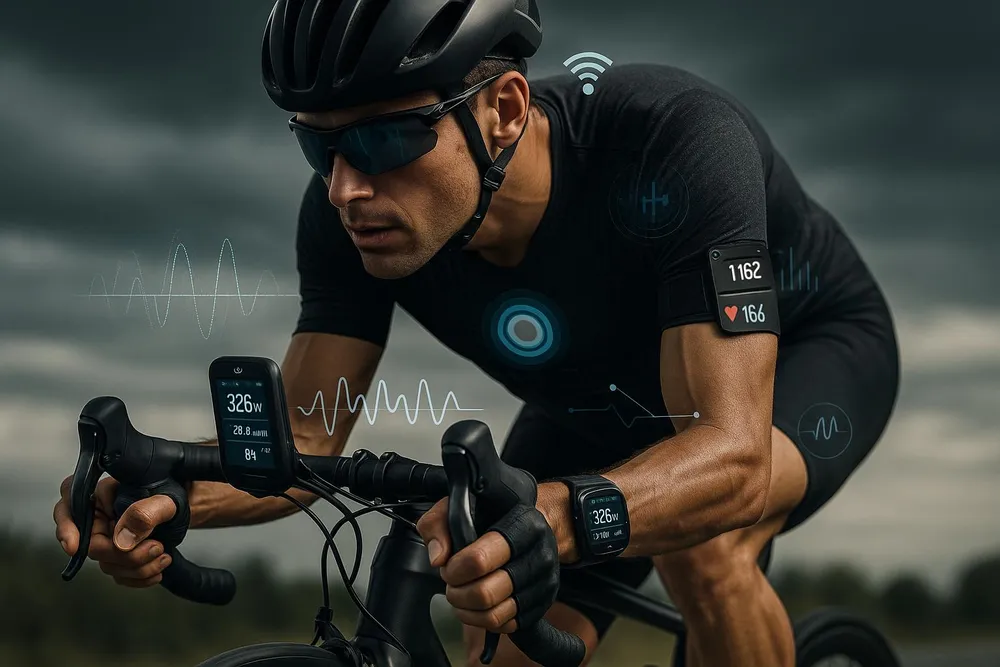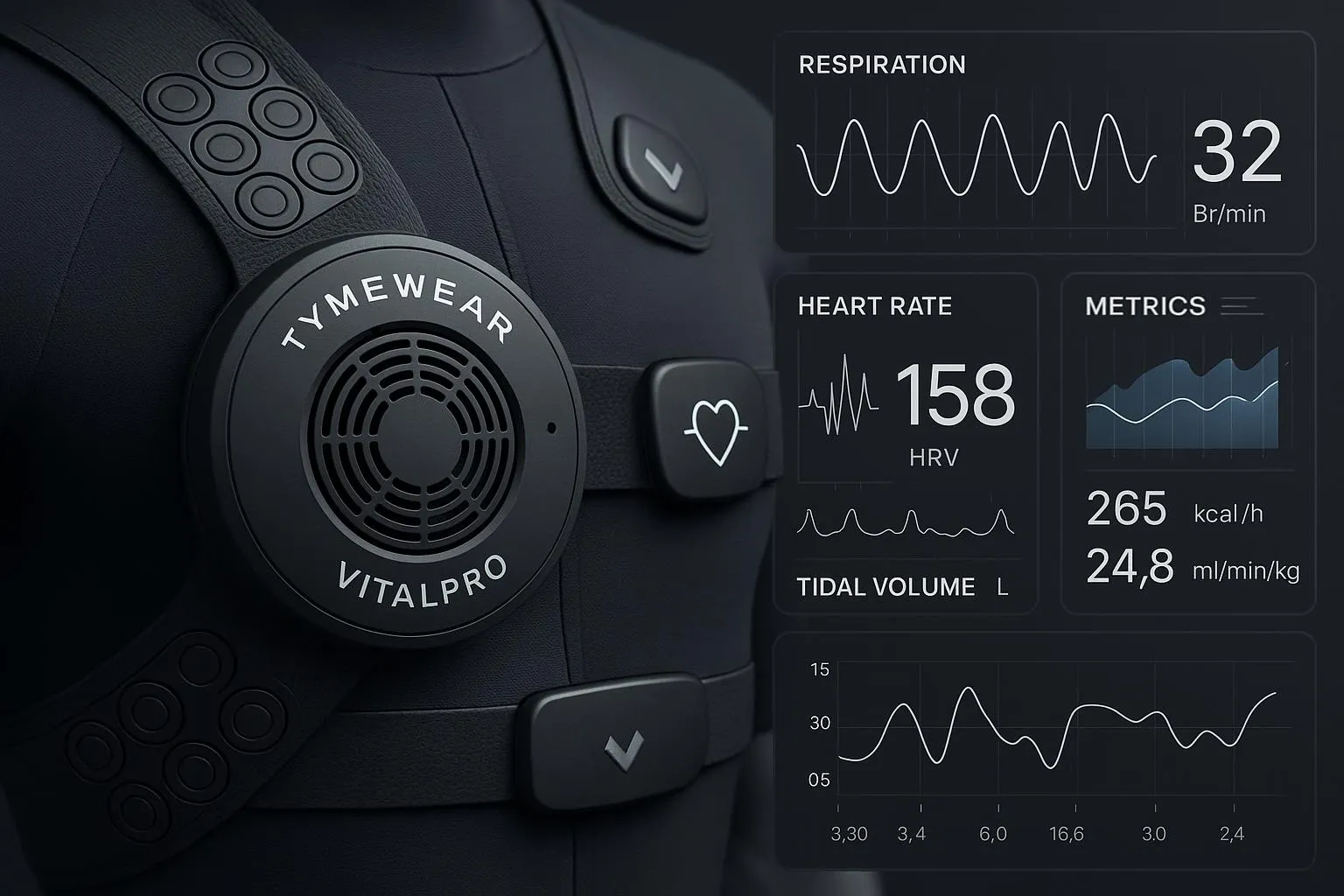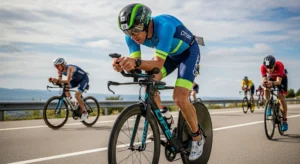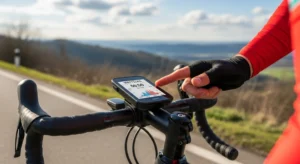The cycling world is experiencing an unprecedented revolution in wearable technology and biometric monitoring systems that is fundamentally transforming how athletes train, compete, and optimize their performance across all levels of cycling participation. The year 2025 has emerged as a pivotal moment when advanced sensor technologies, artificial intelligence, and real-time data analytics have converged to create sophisticated monitoring systems that provide insights into human physiology and performance that were previously available only in laboratory settings. This technological transformation extends far beyond simple heart rate monitoring to encompass comprehensive biometric analysis including respiratory patterns, metabolic efficiency, biomechanical optimization, and real-time physiological adaptation monitoring.
The integration of professional-grade biometric monitoring technology into consumer-accessible wearable devices has democratized access to advanced performance optimization tools that were previously available only to elite athletes with access to sports science laboratories and professional coaching support. Modern cycling wearables can monitor dozens of physiological parameters simultaneously, providing real-time feedback and long-term trend analysis that enables cyclists to optimize their training, prevent injuries, and achieve performance improvements that would have been impossible without such detailed physiological insights.
The sophistication of current wearable technology has reached a level where devices can detect subtle changes in physiological state that indicate overtraining, dehydration, illness onset, or optimal training readiness, enabling cyclists to make informed decisions about training intensity, recovery needs, and performance optimization strategies. This level of physiological monitoring represents a fundamental shift from intuition-based training approaches to data-driven optimization that can significantly enhance both performance outcomes and long-term health and sustainability of cycling participation.
The professional cycling world has embraced advanced wearable technology as an essential component of competitive strategy, with teams like Visma-Lease a Bike utilizing cutting-edge biometric monitoring systems during major competitions including the Tour de France to optimize rider performance, monitor fatigue levels, and make tactical decisions based on real-time physiological data. The success of these professional applications has accelerated the development and adoption of similar technologies for recreational and amateur cyclists who seek to apply professional-level optimization techniques to their own cycling pursuits.

The Evolution of Cycling Biometric Monitoring
The development of advanced biometric monitoring for cycling has evolved from simple mechanical devices that measured basic parameters like speed and distance to sophisticated electronic systems that can monitor complex physiological processes in real-time with laboratory-grade accuracy. This evolution has been driven by advances in sensor miniaturization, wireless communication technology, battery efficiency, and data processing algorithms that have made it possible to create wearable devices that provide comprehensive physiological monitoring without compromising comfort or performance.
The early generations of cycling computers and heart rate monitors provided basic information about exercise intensity and duration, but lacked the sophistication to provide insights into the complex physiological processes that determine performance, recovery, and adaptation to training stimuli. Modern wearable systems can monitor respiratory patterns, oxygen saturation, lactate accumulation, hydration status, core body temperature, and biomechanical efficiency simultaneously, providing a comprehensive picture of physiological state and performance optimization opportunities.
The sensor technologies that enable advanced biometric monitoring include optical sensors for heart rate and blood oxygen monitoring, accelerometers and gyroscopes for motion analysis, temperature sensors for thermal regulation monitoring, and specialized sensors for respiratory pattern analysis. These sensors have been miniaturized and optimized for long-term wear during intense physical activity while maintaining accuracy standards that rival laboratory equipment.
The wireless communication protocols that enable real-time data transmission from wearable sensors to mobile devices and cloud-based analytics platforms have evolved to provide reliable connectivity even during intense physical activity in challenging environments. These communication systems enable real-time coaching feedback, immediate safety alerts, and comprehensive data logging that supports both immediate performance optimization and long-term training analysis.
The artificial intelligence algorithms that process biometric data from wearable devices have been specifically developed to understand the complex relationships between different physiological parameters and their implications for performance, recovery, and health. These algorithms can identify patterns that indicate optimal training readiness, detect early signs of overtraining or illness, and provide personalized recommendations for training intensity and recovery strategies.
The integration of wearable biometric monitoring with broader health and fitness ecosystems enables comprehensive lifestyle optimization that considers not only training and performance factors but also sleep quality, nutrition, stress levels, and other factors that influence overall health and cycling performance. This holistic approach to health and performance monitoring provides insights that enable more effective and sustainable approaches to cycling training and participation.
Professional Team Adoption and Competitive Applications
The adoption of advanced biometric monitoring technology by professional cycling teams has accelerated dramatically in 2025, with teams utilizing sophisticated sensor systems to gain competitive advantages through real-time physiological monitoring, tactical decision support, and comprehensive performance optimization. The success of teams like Visma-Lease a Bike in utilizing advanced wearable technology during major competitions has demonstrated the significant competitive advantages that can be achieved through comprehensive biometric monitoring and data-driven performance optimization.
The Tymewear VitalPro system utilized by professional teams represents the current state-of-the-art in cycling biometric monitoring, providing real-time analysis of respiratory patterns, heart rate variability, metabolic efficiency, and physiological stress indicators that enable coaches and athletes to make informed decisions about pacing strategies, tactical positioning, and energy management during competitions. This system can detect subtle changes in physiological state that indicate fatigue onset, optimal performance zones, and recovery needs that are crucial for competitive success.
The integration of biometric monitoring data with tactical decision-making processes enables professional teams to optimize race strategies based on real-time physiological data from multiple team members simultaneously. This capability allows team directors to make informed decisions about when to initiate attacks, how to manage team resources, and when individual riders need support or recovery opportunities based on objective physiological data rather than subjective assessments.
The data analytics platforms utilized by professional teams can process biometric data from multiple riders simultaneously, identifying patterns and trends that inform both immediate tactical decisions and long-term training and development strategies. These platforms can detect when riders are approaching physiological limits, identify optimal performance windows, and provide predictive analysis about performance sustainability over different race distances and intensities.
The competitive advantages provided by advanced biometric monitoring extend beyond individual performance optimization to encompass team coordination, resource management, and strategic planning that can significantly influence race outcomes. Teams with access to comprehensive real-time physiological data can make more informed decisions about team tactics, individual rider roles, and resource allocation that provide significant competitive advantages over teams relying on traditional assessment methods.
The privacy and competitive intelligence considerations associated with advanced biometric monitoring in professional cycling require careful management to ensure that sensitive physiological and performance data is protected while enabling the performance benefits that these systems provide. Professional teams must balance the competitive advantages of comprehensive monitoring with the need to protect proprietary training methods and individual rider privacy.
The regulatory and anti-doping implications of advanced biometric monitoring technology require ongoing attention to ensure that these systems comply with competitive regulations while providing legitimate performance optimization benefits. The cycling governing bodies are developing guidelines and regulations for the use of advanced monitoring technology that balance competitive fairness with technological innovation and athlete safety.
Respiratory Pattern Analysis and Metabolic Monitoring
The development of advanced respiratory pattern analysis technology represents one of the most significant breakthroughs in cycling biometric monitoring, providing real-time insights into metabolic efficiency, aerobic and anaerobic threshold transitions, and optimal pacing strategies that were previously available only through laboratory testing with expensive and cumbersome equipment. The Tymewear VitalPro system and similar technologies can monitor breathing rate, tidal volume, minute ventilation, and respiratory efficiency continuously during training and competition, providing unprecedented insights into metabolic state and performance optimization opportunities.
The physiological significance of respiratory pattern monitoring extends far beyond simple breathing rate measurement to encompass comprehensive analysis of metabolic efficiency, oxygen utilization, and the transition between aerobic and anaerobic energy systems that determine sustainable performance levels and optimal pacing strategies. Advanced respiratory monitoring can detect the precise point at which the body transitions from primarily aerobic to anaerobic metabolism, enabling cyclists to optimize their pacing to maximize sustainable power output while avoiding premature fatigue.
The sensor technologies that enable accurate respiratory pattern analysis during intense physical activity include strain gauge sensors, impedance measurement systems, and acoustic monitoring devices that can detect subtle changes in chest wall movement, breathing patterns, and respiratory efficiency. These sensors must be designed to operate accurately during vigorous physical activity while remaining comfortable and unobtrusive for the athlete.
The data processing algorithms that analyze respiratory patterns utilize machine learning techniques trained on extensive physiological databases to identify patterns that indicate different metabolic states, training adaptations, and performance optimization opportunities. These algorithms can detect subtle changes in breathing patterns that indicate fatigue onset, optimal training zones, and recovery needs that may not be apparent through other monitoring methods.
The integration of respiratory pattern analysis with heart rate monitoring, power measurement, and other physiological parameters provides comprehensive insights into metabolic efficiency and performance optimization that enable more precise training zone determination and pacing strategy development. This integrated approach to physiological monitoring provides a more complete picture of performance state than any single parameter can provide alone.
The practical applications of respiratory pattern monitoring for cyclists include real-time pacing guidance, training zone optimization, fatigue detection, and recovery monitoring that can significantly enhance both training effectiveness and competitive performance. Cyclists can use respiratory pattern data to identify their optimal sustainable pace, detect when they are approaching their limits, and optimize their recovery strategies based on objective physiological data.
The validation and accuracy requirements for respiratory pattern monitoring systems require extensive testing and calibration to ensure that the data provided is reliable and actionable for performance optimization. These systems must be validated against laboratory-standard equipment and tested across diverse populations and activity levels to ensure accuracy and reliability for all users.
Heart Rate Variability and Autonomic Nervous System Monitoring
The analysis of heart rate variability (HRV) and autonomic nervous system function has emerged as a crucial component of advanced cycling biometric monitoring, providing insights into recovery status, training readiness, and overall physiological adaptation that enable more effective training periodization and injury prevention strategies. HRV monitoring can detect subtle changes in autonomic nervous system function that indicate overtraining, inadequate recovery, or optimal training readiness before these conditions become apparent through other monitoring methods or subjective assessment.
The physiological basis of heart rate variability monitoring lies in the complex interactions between the sympathetic and parasympathetic branches of the autonomic nervous system that regulate heart rate, blood pressure, and other physiological functions in response to training stress, recovery needs, and overall health status. Changes in HRV patterns can indicate shifts in autonomic balance that reflect training adaptation, recovery status, and readiness for additional training stress.
The measurement technologies that enable accurate HRV monitoring during cycling activities include high-precision heart rate sensors, advanced signal processing algorithms, and sophisticated analysis software that can extract meaningful HRV parameters from heart rate data collected during both rest and exercise conditions. These systems must be capable of maintaining accuracy during physical activity while filtering out motion artifacts and other sources of signal interference.
The analysis algorithms that process HRV data utilize time-domain, frequency-domain, and nonlinear analysis techniques to extract multiple parameters that reflect different aspects of autonomic nervous system function and physiological adaptation. These parameters can provide insights into recovery status, training stress tolerance, and optimal training timing that enable more effective training periodization and performance optimization.
The integration of HRV monitoring with other biometric parameters including respiratory patterns, sleep quality, and subjective wellness indicators provides comprehensive assessment of recovery status and training readiness that enables more informed decisions about training intensity, volume, and timing. This integrated approach to recovery monitoring can help prevent overtraining while ensuring that training stimulus is optimized for adaptation and performance improvement.
The practical applications of HRV monitoring for cyclists include daily training readiness assessment, recovery monitoring, training load optimization, and early detection of overtraining or illness onset. Cyclists can use HRV data to determine when they are ready for high-intensity training, when they need additional recovery, and when they should modify their training plans based on their current physiological state.




